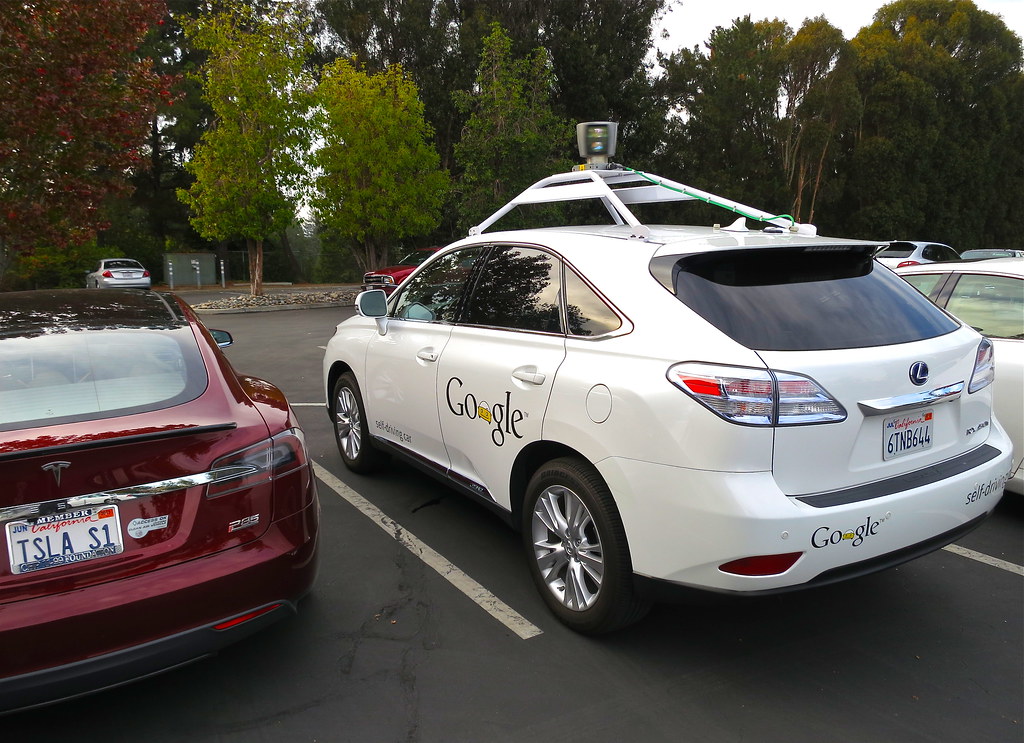'If you put self-driving into the equation, you potentially massively increase the climate impacts.'

Baroness Natalie Bennett is a Contributing Editor at Left Foot Forward, and the former leader of the Green Party of England & Wales.
At the Bonn climate talks, COP23, in 2017, there was a state of near panic among members of the climate community because it was thought that we could see self-driving HGVs rolled out at scale very soon. “Automated Vehicles (AVs)” to use the technical term, were expected to sweep the world any day now, back in 2017.
That could have massive climate impacts as HGVs now spend a large amount of their time parked up because their drivers need rest periods and there is limited availability of drivers. If you put self-driving into the equation, you potentially massively increase the climate impacts.
Yet you might have noticed, our roads are not choked with self-driving vehicles, six years on. Indeed just yesterday, as the House of Lords had the Second Reading of the Automated Vehicles Bill, General Motors announced it was scaling back investment in its AV unit, Cruise, after a horrible incident saw a pedestrian severely injured last month.
The government yet again was promising to be “world-leading”, when in fact it is trailing, as many in the debate pointed out. They are possibly seizing on to get another supposed growth “life-raft”, just as the raft is listing heavily and threatening to sink.
The General Motors decision follows disastrous traffic tangles – the San Francisco fire department has created a special form for reporting problems with them – and demonstrations by activists using traffic cones showing that what runs them is not anything that deserves to be called intelligence, but rather “big data”.
One of the issues I focused on was just what that “big data” demands in terms of resources. There is a temptation to think of “the cloud” and algorithms as being immaterial and having no real-world, physical consequences. We can thank researchers from MIT for calculating, using and processing the data and algorithms to find out what the environmental cost could be.
Data centres now produce 0.3% of global climate change emissions; that is the same as Argentina. The MIT study shows that, if the world introduced a billion autonomous vehicles, the demand for energy for those data centres would double. “If an autonomous vehicle has 10 deep neural networks processing images from 10 cameras, and … drives for one hour a day, it will make 21.6 million inferences each day. One billion vehicles would make 21.6 quadrillion inferences. To put that into perspective, all of Facebook’s data centers … make a few trillion inferences each day … 1 quadrillion is 1,000 trillion”.
Much of the world – the Global South – not only needs energy, but the infrastructure for energy, a light bulk and power for an African child to do their homework at night, the power to run a drinking water processing facility in an Indian village. And the minerals and materials needed to produce all of that is limited. Can AVs massive use be justified?
There’s a further resource point. For self-driving vehicles to operate effectively “roads may need to be kept free of small debris” and “uneven” surfaces smoothed, I quoted one study. I asked in the debate for realism here too. Do we actually have the capacity—the financial, human skills or machinery capacity—to deliver roads entirely free of debris and uneven surfaces? Take a look at just one collection of potholes you pass today, and you may well doubt it.
That raises another point made powerfully in the debate by Lib Dem Baroness Bowles of Berkhamsted, that the road conditions in the US, France and Australia are very different from the UK’s. Getting the data to show – if it can be shown – that AVs are even, as the proposed standard wants that of a “careful and competent human driver” is going to require a huge amount of testing, in our conditions.
Is that even a good enough standard – an issue the House will surely come back to. As the RAC Foundation has said: “When we put our lives in the hands of automated machinery, we expect it to perform to the highest standards of safety”.
Further, there’s been suggestions – and they might be true – that having shared AVs on call might reduce traffic. But it could also increase it. In 2019, a study in California found that the owners of partially autonomous vehicles were taking them on longer journeys, particularly at weekends. That makes sense when you think about it: you can put your feet up, play a computer game, read or have a sleep, and so you decide that you are going to take a long weekend trip to the other end of the UK.
Crossbencher Lord Cameron of Dillington, made a really disturbing suggestion: we might have to bring in anti-jaywalking laws to allow for autonomous vehicles. What are our economy and society for? Are we here to serve the needs of people or are we here to service the machines? We need to think about how our streets, pavements and airspace work for people, not for the benefits of multinational companies and their machines.
(Picture credit: Creative Commons: Jurvetson)
Left Foot Forward doesn't have the backing of big business or billionaires. We rely on the kind and generous support of ordinary people like you.
You can support hard-hitting journalism that holds the right to account, provides a forum for debate among progressives, and covers the stories the rest of the media ignore. Donate today.



